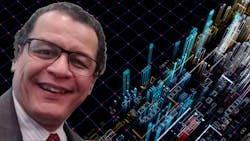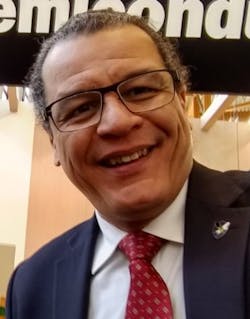Joining the Team or How Exact Are the Lines On Your Ruler?
Let me start by saying how pleased and proud I am to be joining the team here at Endeavor Business Media as the Editor of Evaluation Engineering. In one sense, you can call me the features editor, as I will be primarily responsible for obtaining and editing the contributions to this great publication. Rick Nelson will continue to handle our Special Reports as contributing technical editor, and managing editor Ken Cormier will still handle EE’s press releases.
Evaluation Engineering is not just the name of our publication, but also a way to describe the industry space we serve. In one sense, evaluation is the most critical of all engineering disciplines, as one cannot address an application space without examining it first. One cannot create a design without knowing the physical, mechanical, and electrical parameters of the system being served, and the solution you wish to create.
The bottom line is there is no precision without feedback. In every endeavor, regardless of the nature of the task at hand, accuracy is paramount. Even the basic act of eating cannot be performed if you miss your mouth with the fork. There are some who claim “eyeballing” is an accurate means of calibrating something, not recognizing their trained experience in determining a situation is a validation of the philosophy involved.
Once you establish that measuring things is important, the focus then shifts to the accuracy of the measurement. Information is useless unless it is placed in the proper context, and can be trusted in its stated precision. You may only have lines every foot on your ruler, but if they are exactly placed, that ruler is more useful than one that may have more regular, but less accurate, markings. Unless you can trust the precision of your measurement, it is almost useless.
This applies to all aspects of design. One of the new paradigms is the convergent nature of technology today. There is almost no solution in existence today that doesn’t integrate multiple core technologies. with mechanical, electrical, and electronic systems being used in concert. Every aspect of a design is critical today, with no wiggle room in any aspect. Efficiency, power density, form factor, and solution footprint are all important factors today.
What this means to the engineering community is that all parameters are important, and that means all parameters must be measured. This is one of the greatest pressures on the engineer, in that whatever measurement technology and methodology you use, it has to be better than the system(s) you are testing. In order to measure the accuracy of anything, you have to have a greater resolution than the device being measured. The lines on your ruler have to be closer together and more precisely placed than the lines on the ruler you are validating. This means the test community has to stay at least one step ahead of the design engineer.
In the real world, that means you have to have tighter tolerances, faster capture, larger samples, and more memory than anything you expect to encounter in your endeavors. Lasers, mechanical and electronic probes, and other measurement systems must operate and perform at optimum to stay ahead of the rapidly-developing technologies that are creating the creative disruptive design environment we face today.
Since this is a column about my joining the publication, I will forgo the traditional editorial “we” in this instance to talk a little bit about myself. An ex signals-intelligence soldier, I was lucky enough to work with the latest electronic systems as they were being developed for the electronic battlefield. For example, I was in one of the guinea pig test groups for the Army’s first automated radio direction-finding systems ever, Trailblazer.
After leaving the military, I stayed in Germany, selling high-end stereo, among other things, to the Army/Air Force PX (retail) system. (One of my running jokes is that everything I know about power electronics I learned selling Sumo amplifiers.) I worked as a freelance consumer tech journalist at that time. Eventually I wound up back in the USA, where my first job in this space was working for Electronic Products as an associate editor in 1998. The rest, as they say, is history.
Looking forward, I am very much looking forward to continuing to serve the engineering community as part of the team here at Evaluation Engineering. We welcome your input, contributions, and ideas, and extend a warm welcome to anyone who wants to participate in our community. We will continue to serve you to the best of our ability, and I take pleasure and pride in my role in helping achieve that goal.

